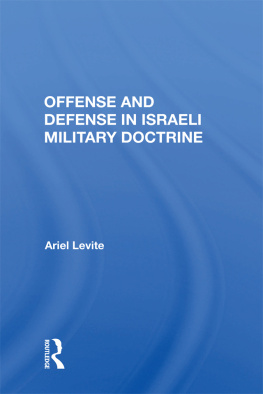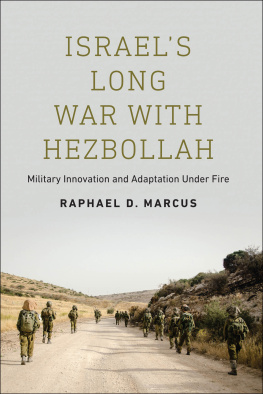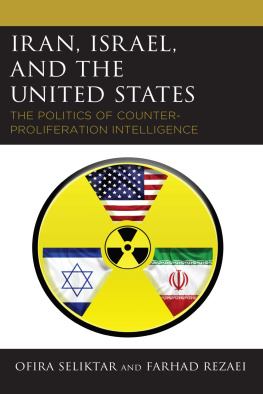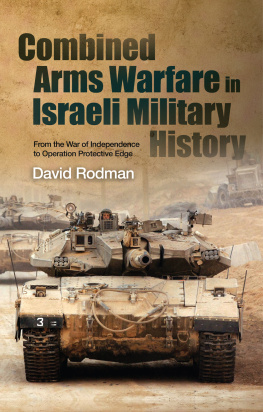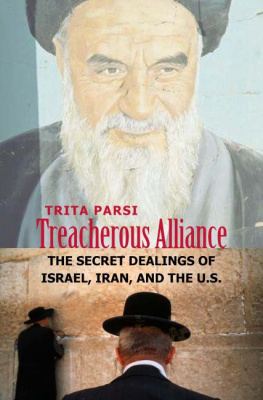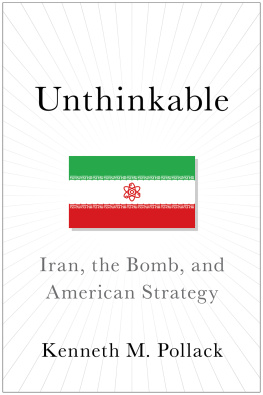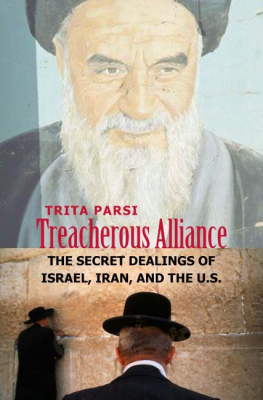ISRAEL vs. IRAN
Related Titles from Potomac Books
Does Israel Have a Future? The Case
for a Post-Zionist StateConstance Hilliard
Transforming Americas Israel Lobby: The Limits of Its Power
and the Potential for ChangeDan Fleshler
Axis of Unity: Venezuela, Iran & the Threat to AmericaSean Goforth
Irans Revolutionary Guard: The Threat That Grows
While America SleepsSteven OHern
ISRAEL vs. IRAN
The shadow War
YAAKOV KATZ | YOAZ HENDEL

Copyright 2012 by Yaakov Katz and Yoaz Hendel
Published in the United States by Potomac Books, Inc. All rights reserved. No part of this book may be reproduced in any manner whatsoever without written permission from the publisher, except in the case of brief quotations embodied in critical articles and reviews.
Library of Congress Cataloging-in-Publication Data
Katz, Yaakov, 1979
[Yisrael neged Iran. English]
Israel vs. Iran : the shadow war / Yaakov Katz and Yoaz Hendel.
p. cm.
Includes bibliographical references and index.
ISBN 978-1-59797-668-8 (hardcover edition: alk. paper)
ISBN 978-1-59797-886-6 (electronic edition)
1. Espionage, Israeli. 2. IsraelRelationsIran. 3. IranRelationsIsrael. 4. Nuclear weaponsIran. 5. National securityMiddle East. I. Hendel, Yoaz. II. Title. III. Title: Israel versus Iran.
UB271.I8H4513 2012
327.125694055dc23
2011045394
Printed in the United States of America on acid-free paper that meets the American National Standards Institute Z39-48 Standard.
Potomac Books, Inc.
22841 Quicksilver Drive
Dulles, Virginia 20166
First Edition
10 9 8 7 6 5 4 3 2 1
Yaakov dedicates this book to the lovely
and beautiful Katz women:
Chaya, Atara, Miki, and Rachel.
Yoaz dedicates this book to the beloved shadows
who watch over him:
Shiri, Tavor, and Beeri.
In these troubled times, our families remain our source of hope.
Contents
Preface
Our work on this book began after a conversation we had in the winter of 2009. It was a few weeks after Israels successful Operation Cast Lead against Hamas in the Gaza Strip and the two of us were driving back to Jerusalem from a press conference with the Israel Defense Forces (IDF) about the Iranian-Hamas relationship.
We discussed what we had learned in the briefing. One of us mentioned that the growing axis between Gaza and Tehran was only the tip of the iceberg. It was then that this book was born.
Our objective was to explore Irans growing influence and presence along Israels borders, particularly via Hamas in the Gaza Strip and Hezbollah in Lebanon. Our focus was on the period from the end of the Second Lebanon War in 2006 until today. As we mention numerous times throughout this book, the 2006 war against Hezbollah was really a war against Iran, as was the operation in Gaza in 2009. Irans pursuit of nuclear weapons adds a new dimension to the ongoing war.
Over the years, the Israeli military has been a focus of our attention in various ways. We are both IDF veterans and continue to serve in the reserves. Professionally, we write daily about the IDF and its various operations, about intelligence assessments, and about Israels overall strategic standing in the Middle East. Our jobs have allowed us not only to report on Israel but also to watch it from the front lines and to become a part of the story. The Palestinian terrorist campaign against Israel throughout the Second Intifada, beginning in 2000; Israels unilateral withdrawal from the Gaza Strip in 2005; the Second Lebanon War in 2006; and Operation Cast Lead in the Gaza Strip in 2009 are only some of the major events we have had the opportunity to be a part of.
We truly owe this book to the hundreds of peoplemany of whom are still in active service in the Israeli and American defense establishments and intelligence agencieswho agreed to meet with us and share their stories and insights. Most of the people we interviewed asked for anonymity, a request that we have respected.
Readers are justified for being suspicious of anonymous sources. As reporters we have tried our best to use the names of our sources whenever we could. In todays world, though, particularly in Israel and particularly when talking about issues of national security and intelligence, off-the-record conversations are the bread and butter of any military reporter. As Israelis we are also bound by our countrys rules of censorship. Although Israel is a democracy and has complete freedom of the press, military censors need to approve content when it comes to issues of national security first. We found the censors to be tough but fair, and we appreciate their level of professionalism.
Yaakov is indebted to the Jerusalem Post, where he has worked for nearly a decade. Every day the paper gives him the opportunity to tell the story of the Israeli military. He particularly thanks David Horovitz, the former editor in chief of the Post who has served as a mentor and friend, and to the papers current editor, Steve Linde.
Yoaz would like to thank the Begin-Sadat Center for Strategic Studies at BarIlan University for serving as a place for academic growth.
A special thank you goes to our editor, Hilary Claggett. She was as excited about the book as we were from the beginning, and we appreciate her enthusiasm.
We also thank Yakov Rand, who assisted us in translating many parts of this book, as well as Yaakov Katzs mother, Debbie Katz, for taking the time to read the book as a work in progress. Their important insights and comments made this work what you see today. We also thank Paul Packer for his assistance in helping us gain access to a remarkable story, one of many we are fortunate to be able to tell in these pages.
Last, but not least, we owe a profound debt of gratitude to our families. Without their support, this book would not have been possible.
INTRODUCTION
Jerusalem is at once the city where everything began and, according to doomsday prophesies, the place where everything will come to an end.
A short drive from Jerusalems Old City, which is home to some of the most sacred Jewish, Christian, and Muslim sites in the world and has seen centuries of bloodshed, is a museum meant to remind the world of what evil can do. It is called Yad Vashem, Hebrew for memorial and name. The State of Israel in 1953 chose the mountain atop which Yad Vashem is located, surrounded by hills with tall, dark-green pine trees and by expanses of modern housing in southern Jerusalem, as the location to safeguard the memory of the six million Jews whom the Nazis killed during the Holocaust.
Similar to the Tomb of the Unknown Soldier in Washington, D.C., or Turkeys mausoleum of Mustafa Kemal Atatrk, Yad Vashem is where all visiting dignitaries come to pay their respects and lay a wreath.
Perched on the edge of a cliff and facing a forest to the south of Jerusalem is a cattle car, one of the thousands that the Nazis used to transport Jews to their deaths at concentration camps across Europe. Looking down at the valley beyond the car, one sees a collection of dozens of slab stones, each engraved with the name of a Jewish community in Europe that was destroyed during the Holocaust. On the other side one can look out to the newly rebuilt Jerusalem and see the apartment buildings made of Jerusalem stone.
In January 2010, on the eve of International Holocaust Remembrance Day, Israeli prime minister Binyamin Netanyahu visited Yad Vashem for the opening of an exhibit that displayed the original blueprints of the Auschwitz-Birkenau Nazi death camp. Netanyahu issued a warning to the world of the looming threat Iran posed to the State of Israel. He cautioned that while Iranian president Mahmoud Ahmadinejad spoke only about his desire to destroy Israel, the day would come when he would aspire to destroy the rest of the world as well.
Next page

